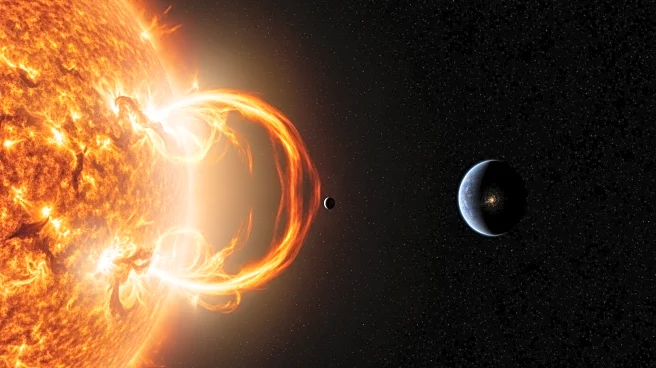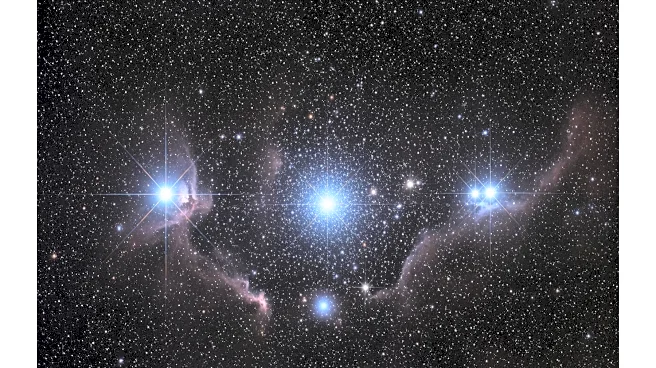What's Happening?
Astronomers using the European Space Agency's XMM-Newton observatory and the LOFAR radio telescope have identified a coronal mass ejection (CME) from a distant star, marking the first confirmed observation
of such an event beyond our Sun. The CME was powerful enough to potentially strip the atmosphere from any nearby planets. This discovery fills a long-standing gap in understanding stellar eruptions and their effects on planetary systems. The star, a hyperactive red dwarf, exhibits characteristics that could influence the habitability of planets within its vicinity.
Why It's Important?
The ability of CMEs to remove planetary atmospheres is crucial in the search for life beyond the Solar System. This discovery suggests that intense space weather may be more extreme around smaller stars, which are common hosts for potentially habitable exoplanets. Understanding these dynamics is vital for assessing the long-term habitability of planets and their ability to retain atmospheres. The findings could reshape the criteria for identifying habitable zones around stars, impacting future exoplanet exploration and research.
What's Next?
The discovery opens new avenues for studying space weather around other stars, potentially leading to more refined models of stellar activity and its impact on exoplanetary atmospheres. Continued observations and research could further elucidate the mechanisms behind CMEs and their frequency across different types of stars. This knowledge is essential for future missions aimed at finding habitable worlds and understanding the conditions necessary for life.
Beyond the Headlines
The study highlights the collaborative efforts in astronomy, utilizing multiple observatories and advanced data-processing techniques to achieve groundbreaking results. It underscores the importance of international cooperation in scientific research, paving the way for more comprehensive studies of stellar phenomena and their implications for planetary science.











